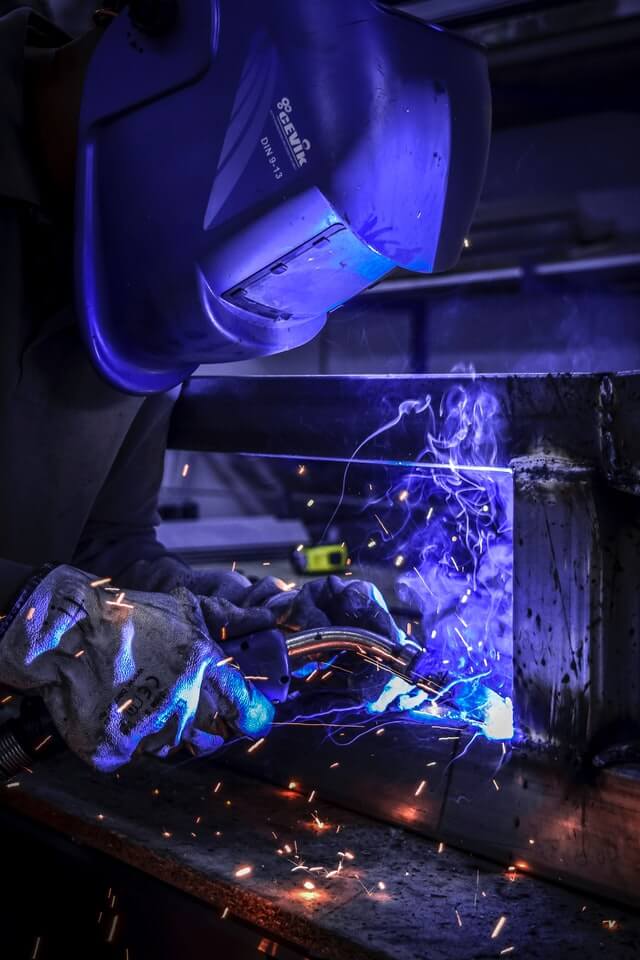Inquirer:-
For welding a furnace with material P 355GH, we need to select welding consumables. The plate thickness is 22 mm.
P355GH Yield strength value is 345 MPa min, Tensile strength 510-650 MPa & it undergoes a process of corrugation forming at 880-910° C and PWHT at 610°C.
PROCESS: FCAW +SAW
So please suggest consumables for this. And can we do multiple heat treatments on materials like corrugation, normalizing, and post-weld heat treatment?
Answer:-
P355GH grade ( EN 10028 specification) is non-alloyed fine grade heat resistant steel equivalent to SA-516 Gr 70 Steel but there are microalloying elements present in P355GH chemical composition for obtaining fine grain structure. The plates are supplied in Normalised condition and possess very good weldability and formability as well. This steel finds application in the construction of steam boilers, pressure vessels, and heat exchangers in the oil and gas industry for high-temperature applications.
The main challenge seems to me for your procedure qualification of the product is corrugation treatment to be carried out at 900 °C after Welding. Metallurgical point of view, the corrugation treatment is conducted above Ac1 lower critical temperature range so, at this point of time, weld metal yield strength, tensile strength & CVN value drop out significantly. I note that corrugation temperature is almost at a normalizing temperature range for this grade and considering your thickness of plate i.e 22 mm, As per the rule of thumb one inch per hour rate, there I do not expect much decrease in yield strength. A similar thing applies to PWHT Process also, which is rather conducted at 610 °C, well below the Ac1 Temp range. But it is for the purpose of stress-relieving to lower the yield point or creep at elevated temperature and to allow plastic deformation to take place in those areas where internal stresses have crossed this limit, thereby restoring the ductility of brittle zones in welding and relieving the internal stresses.
The noteworthy thing is the chosen filler metal must be formulated for stress relieving and the welds it produces are able to withstand these high-temperature and should be able to provide sufficient ductility and retain the mechanical strength of the deposited weld metal after PWHT.
in your case, the impact strength is not a requirement but after PWHT, the weld metal must also provide acceptable CVN toughness values at sub-zero temperature as per the code of construction.
I have studied various welding consumable products literature & have found these two products listed below. According to me, these two products should meet your requirements.
SAW Consumable: Flux 544 & EA-2 wire (As per AWS/SFA 5.23: F7A (P) 2EA2-A2)
The above product reports up to 550 MPa UTS & 470 Min YS and 20% ductility with deposited weld metal strength after PWHT at 620°C+/-15.
FCAW-G Consumable: GFC 8Ni1 (As per AWS/SFA 5.29: E81T1-Ni1C)
The above product reports up to 586 MPa UTS & 552 MPa Min YS and 29% ductility with deposited weld metal strength after PWHT at 610 ° C+/- 15 deg.
Attached is the web link to the product literature for your reference.
I advise you and the filler metal manufacturer / technical Sales representative may sit together to discuss and work out this specific requirement.
Metallurgical point of view, try selecting consumables with preferably less carbon content, i.e. 0.07 – 0.12 % C wt. this is because less will be the carbon in filler metal consumable, less will be the possibility of pearlite formation in the weld metal and your structure will be more ferritic and ductile.
A study conducted by Liye Qin et al, Effects of PWHT on Microstructure and Mechanical Properties of A516 Gr.70 reported simulated PWHT of SA-516 Gr 70 material with different carbon content, However, they did not mention any use of filler metal or weld. They conducted a study on plate material only. They concluded that less carbon is beneficial for obtaining sufficient ductility & strength after PWHT.
Another study conducted by A. Nait Salah et. al Effect of Filler Metal diameter on Weld Joint of Carbon Steel SA516 Gr 70 and Filler Metal SFA 5.17 in Submerged Arc Welding SAW reported to use preferably smaller wire diameter ( Ø = 2.4 mm ) to obtain optimum hardness and strength after PWHT. They worked with 22 mm thick plate material SA-516 Gr 70 with matching filler class SFA 5.17 and EH 14 class.
If you are able to change the process, you may think of Griduct 2, E 7018-A1 (AWS/SFA 5.5 Class) and/or GETIG 70S2, ER 70S2 (AWS A-5.18 class)
As per your requirement, you may prepare a weld test coupon using the above filler metal, simulate it for 900 ° C (corrugation temp), and subject them to a side bend test; the desirable point is that the coupon must pass a side bend test successfully in order to ensure sufficient ductility at this processing temperature range.
Do you have an option to use pre-corrugated sheets and weld them and PWHT subsequently? then you may avoid ductility and strength-related issues and related probable failure during the corrugation process.
Hope this guidance may be helpful to you.
Welding Consultant,
Weld Met Advisory Servies.
Reference:-
[1] SAW & FCAW Consumable Technical product literature-GEE Limited
https://www.geelimited.com/product/geeflux-544/228
https://www.geelimited.com/product/gfc-81ni1/241
[2] Liye Qin et al 2018 IOP Conf. Ser.: Earth Environ. Sci. 199 032005
[3] A. Nait Salah et al, Effect of Filler Metal Diameter on Weld Joint of Carbon Steel SA516 Gr 70 and Filler Metal SFA 5.17 in Submerged Arc Welding SAW, International Scholarly and Scientific Research & Innovation 13(2) 2019

